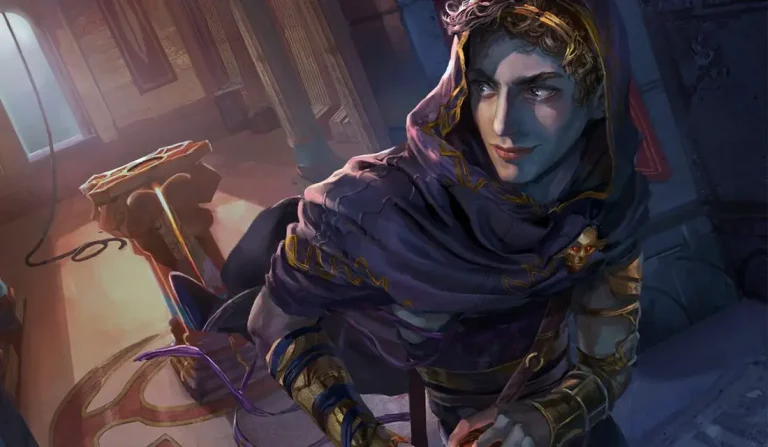D&D 5e: Armorer Artificer Guide

D&D 5e: Armorer Artificer Guide
Role in the Party
We’ve all wanted to make Iron Man in D&D, right? This is it. This is how you play Iron Man. If you like Blue Beetle, Full Metal Alchemist, or literally anything involving a rad suit of armor, this is how you do it.
Epic
Good
Meh
Bad
The Armorer Artificer subclass is found in Tasha’s Cauldron of Everything. Click here to pick up your own copy of Tasha’s Cauldron of Everything!
Armorer Features
Tools of the Trade: At third level, gain proficiency with heavy armorer and smith’s tools. Useless for many classes, but absolutely vital for you.
Armorer Spells: It never hurts to get some new spells. At third level, Magic Missile and Thunderwave; at fifth level, Mirror Image and Shatter; at ninth level, hypnotic pattern and lightning bolt; at thirteenth level, fire shield and greater invisibility; and at seventeenth level, Passwall and Wall of Force. The best part is that, of course, they don’t count against the number of spells you can have prepared.
Arcane Armor: The most important part of the build is at level 3 when you choose the subclass: Your iron man armor. If your armor requires strength to wear, it doesn’t for you. You can use your armor as a conduit for casting spells (See also: Iron man repulsor beam). Your armor can’t be removed against your will, can expand to cover your whole body and retract or deploy your helmet as a bonus action (like iron man). Also, if you like Full Metal Alchemist, your armor can now replace any missing limbs, acting exactly as your limb would. You can also doff or don the armor as an action, but how often do you take your armor off, anyway?
Armor Model: For the blue beetle fans, at third level, you can also customize your Arcane Armor into either Guardian mode or Infiltrator mode. Unlike blue beetle, you can only swap between them when you finish a short or long rest if you have your smiths tools on you.
The first mode is Guardian, which lets you use a 1d8 thunder damage punch as an attack and the pulse that comes after gives disadvantage on attack rolls against creatures other than you. Guardian mode also has a defensive field, which can take a bonus action to give you temporary hit points equal to your Artificer level, but only while you’re wearing the armor. You can do this a number of times equal to your proficiency bonus, and regain all uses when you take a long rest.
The second mode is Infiltrator. This one gives you a Lightning Launcher, doing 1d6 lightning damage as a ranged attack (Range of 90/300), and once per turn when you hit a creature with this attack, you can deal 1d6 extra lightning damage. In addition, your walking speed increases by 5ft, and you get advantage on Stealth checks unless your armor would impose disadvantage, in which case they cancel each other out.
Extra Attack: At 5th level, you can attack twice when you take the attack action. Never hurts, always good.
Armor Modifications: At 9th level, you can now add infusions to your Arcane Armor, which counts as separate pieces: Chest piece, boots, helmet, and your special weapon. Each of these can have one infusion, and the infusions transfer when you swap your model with the Armor Model feature. Also, you can infuse two more items at a time, but only if those two extra things are part of your arcane armor. Considering how many amazing infusions there are just for armor, this is always an excellent choice.
Perfected Armor: At 15th level, your armor modes get additional bonuses.
For the Guardian armor: When a huge or smaller creature you can see ends its turn within 30ft of you, make them do a strength saving throw against your spell save DC or YOINK them toward you up to 30 feet, to an unoccupied space. If you pull them within 5ft of you, you can use the action to make a melee weapon attack, which could well be your electro-punch if you want it to be. You can only do this as a reaction a number of times equal to your proficiency bonus, but at 9th level that’s already 4, probably as much as you need. You regain expended uses after a long rest.
For the Infiltrator armor: Any creature that takes lightning damage from your Lightning Launcher glows like a glowstick for 5ft around until the start of your next turn, with disadvantage on attack rolls against you. Also, the next attack roll against it has advantage and does an extra 1d6 lightning damage. (note that the book doesn’t say it has to be YOUR attack).
Strengths
Read More: Complete 5th Edition Artificer Guide
Someone cue up Black Sabbath because you are Iron Man. Squishy in body but with a strong magical exoskeleton, this is a cool class for flavor. You’re a flexible member of the party, a jack-of-all-trades in combat.
Weaknesses
As a jack-of-all-trades, you’re also a master of none. You’re squishier under your armor than most of the tank classes, but you’re not incredibly swift or stealthy like monks or rogues. You’re great for a team, but you’re no army of one.
Best Race Options
–Bugbear: Darkvision to 60ft and fey ancestry are good. The long-limbed feature giving you an extra 5ft reach for a melee attack and powerful build are great for when you’re in Guardian mode; the proficiency in sneak and moving through or stopping in a space small enough for a small creature and the extra 2d6 surprise attack damage is great for Infiltrator mode. if you plan to use both sides of your armor set, Bugbear is a surprisingly good choice!
–Earth Genasi: Darkvision as usual, but more importantly, you get Earth walk. You can move through difficult terrain without using extra movement if you’re on the ground or floor. You also get the Merge with Stone feature. This gives you the Blade Ward cantrip, which can be cast as normal or as a bonus action (but only as a bonus action up to your Proficiency Bonus). At 5th level, you’ll get Pass Without Trace without a material component (once per long rest, or via a spell slot of 2 or higher).
These skills let you maximize the use of your guardian heavy armor, as well as give you a few stealth options for the Infiltrator.
–Tabaxi: Dark vision, climbing speed equal to walking speed, Cat’s claws (which could feasibly stack with the Guardian armor’s Thunder Gauntlets), proficiency in perception and stealth, and most importantly, Feline Agility. Considering all the spells and infusions you can use to move someone through the battlefield, your cat can become the herding dog of the team.
Just as an interesting note: Due to its shell, the Tortle can’t play this class in any meaningful way, because although they can cast the spells, they can’t wear armor, and therefore the arcane armor that this build is based around cannot be used.
Choosing the Right Skills
Artificers get to choose two between Arcana, History, Investigation, Medicine, Nature, Perception, and Sleight of Hand.
Recommended are Arcana and Sleight of hand, to capitalize on the intelligence of the Artificer, and the stealth of the Infiltrator armor. But if you’d prefer a beefier character or to focus on intellectual pursuits, History or Investigation are pretty good as well.
Fitting Feats
Feats here are best chosen when you know what you’re planning to do with your armor. Assuming you’ll swap between modes…
Skulker: For your stealthy attempts. Hide when lightly obscured; when you’re hidden and miss with a ranged weapon attack (such as your lightning launcher), making the attack doesn’t reveal your position; and dim light doesn’t impose disadvantage on your perception checks relying on sight. Note that this ability requires a dex of at least 13.
Heavy Armor Master: Increase your strength score and reduce bludgeoning, piercing, and slashing damage you take from nonmagical weapons by 3. Take early for maximum use.
Elemental Adept: This is a good one to take twice, for Thunder and Lightning respectively (choosing whichever one you use more frequently first). Spells you cast with your chosen element ignore resistance to damage of that chosen type, and when you roll damage dealt of that type, you treat all 1s rolled as 2s, giving you a little extra damage boost. Especially if you’re rolling multiple dice.
Optimal Backgrounds
–Folk Hero: Not just because you’re definitely capitalizing on the Iron Man vibes. Gain skills in Animal Handling and Survival, proficiency in one type of artisan’s tools and land vehicles. You get artisan’s tools of your choice, some basic items, and 10gp. More importantly, you get Rustic Hospitality, meaning common folk will help you and your party out, even shielding you from the law in case J Jonah Jamison decides he doesn’t like your face, or whatever.
–Soldier: Similar to the folk hero, but more useful. Skill proficiencies in Athletics and Intimidation; tool proficiencies in one type of gaming set and land vehicles. Some flavorful items and ten gp. Also, you gain military rank, which means other soldiers from the same military are loyal to you and recognize your authority if you’re of a higher rank. Your rank opens doors wherever it’s recognized.
–Criminal: If you like being stealthy, the Criminal gives you Deception and Stealth proficiencies, as well as proficiency in one type of gaming set and thieves’ tools. You get typical items and 15gp.
You also get the feature ‘Criminal Contact’, which can get information from place to place. You always know who can send messages. You can flavor this as a spy, but it doesn’t change anything mechanically.
Multiclassing Options
–Assassin Rogue: Proficiency with disguise and poisoner’s kits, your stealthing from Infiltration mode will net you sneak attack damage, you’ll be able to use more movement by bonus action disengaging, increased critical hits at level 3. They’re little tweaks to your gameplay as an Armorer that will lead to bigger and badder damage.
–Rune Knight Fighter: In case you needed more Artificer in your Artificer. Add runes to your armor when you’ve run out of infusions if you want. Cloud rune and Fire Rune are your best choices for starting. Whether you want to keep leveling in this class depends on if you think the runes are that much better than infusions. Oh also, you can go up a size category once you become a Rune Knight due to Giant’s Might, which also grants you an additional 1d6 damage when you hit with a weapon or unarmed strike.
–School of Evocation Wizard: This isn’t a super great option, BUT, it expands your spell list slightly, and more importantly: It grants you Spell Sculpting. RAW, it should work with evocation spells your artificer casts as well, because it only says “When you cast an evocation spell that affects other creatures”. It doesn’t say they have to be Wizard spells. Use this to keep your friends out of harm’s way when you’re doing any blasting with your artificer spells. You might find yourself doing something other than punching while you’re being Iron Man, after all.
Would I recommend playing an Armorer Artificer?
Playing an Armorer Artificer looks like a lot of fun opportunities. Mostly Iron Man-shaped opportunities, but there are a thousand other ways to play it. I’d highly recommend it for a combat-focused or stealth-focused game. Maybe not as much for a roleplay focused game, but if your idea of roleplay includes stealthing into a manor or doing some assassination work, this is a good all-rounder for backing up your rogue. And please, on behalf of all sneaky folk, Back up your rogue.








